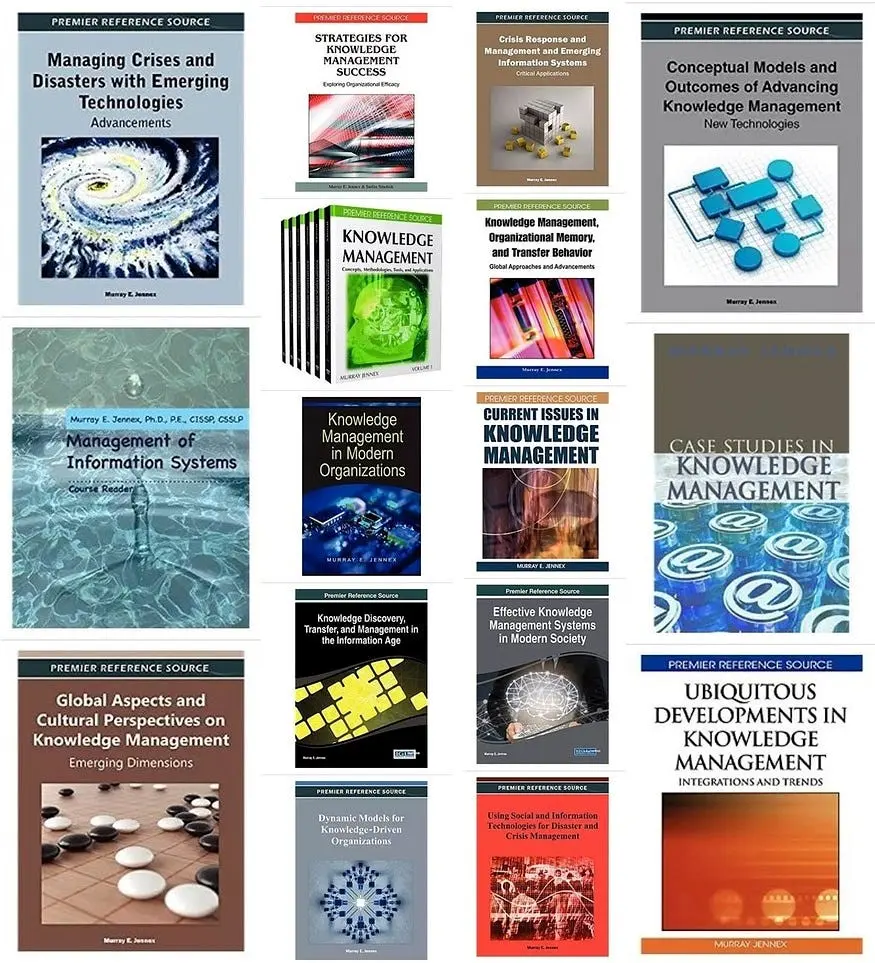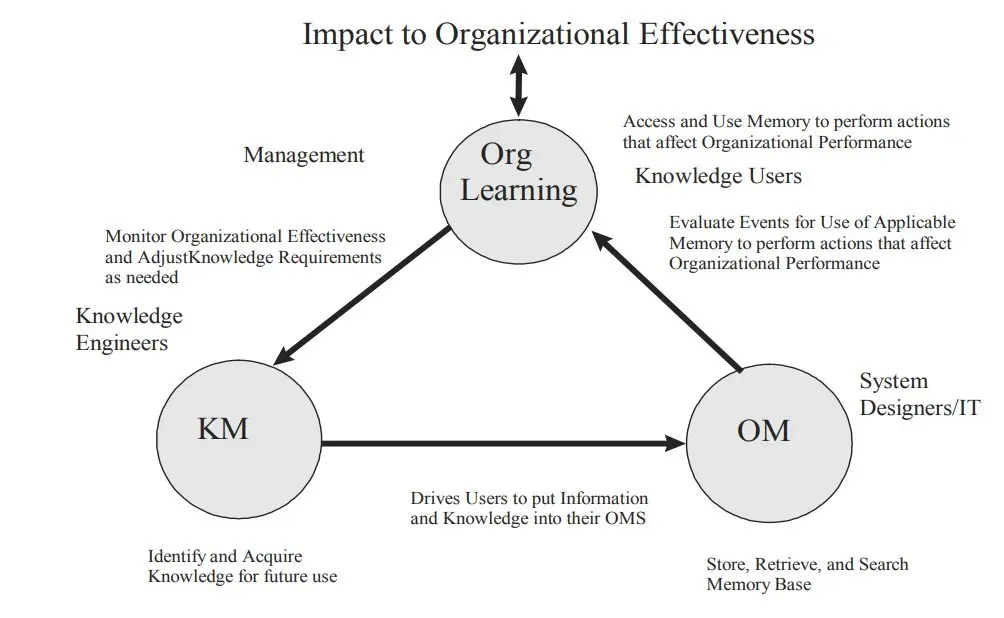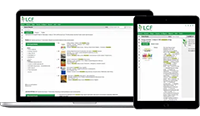Lucidea’s Lens: Knowledge Management Thought Leaders Part 86 – Murray Jennex

Stan Garfield
 Murray Jennex is Editor in Chief of the International Journal of Knowledge Management and President of the Foundation for Knowledge Management (LLC). He also teaches at West Texas A&M University and is the author of over 150 journal articles, book chapters, and conference proceedings.
Murray Jennex is Editor in Chief of the International Journal of Knowledge Management and President of the Foundation for Knowledge Management (LLC). He also teaches at West Texas A&M University and is the author of over 150 journal articles, book chapters, and conference proceedings.
Murray specializes in knowledge management, crisis response, system analysis and design, IS security, project management, e-commerce, and organizational effectiveness. He serves as the Knowledge Systems Track co-chair at the Hawaii International Conference on System Sciences (HICSS).
Murray created the following content which I have curated to represent his contributions to the field.
Books by Murray Jennex

Knowledge Management/Knowledge Management System (KMS) Critical Success Factors
The following is an excerpt from a conference paper titled Towards Measuring Knowledge Management Success, which was authored by Murray Jennex, Stefan Smolnik, and David Croasdell:
- A knowledge strategy that identifies users, sources, processes, storage strategy, knowledge, and links to knowledge for the KMS;
- Motivation and commitment of users, including incentives and training;
- Integrated technical infrastructure, including networks, databases/repositories, computers, software, and KMS experts;
- An organizational culture and structure that supports learning and the sharing and use of knowledge;
- A common enterprise-wide knowledge structure that is clearly articulated and easily understood;
- Senior management support, including allocation of resources, leadership, and training;
- Learning organization;
- The KMS has a clear goal and purpose;
- Measures are established to assess the impacts of the KMS and the use of knowledge, as well as verification that the right knowledge is being captured;
- The search, retrieval, and visualization functions of the KMS support facilitated use of knowledge;
- Work processes are designed that incorporate knowledge capture and use; and
- Knowledge is secured / protected.
Knowledge Systems Architecture

The strategy layer comprises the business/organization strategy, the knowledge strategy and goals, and the measurement system. Management expects that the business/organization and knowledge strategies are aligned, which means that the organization has identified how and what knowledge is needed to support the latter. The measurement system identifies metrics that monitor the progress of the KM/knowledge processes (which we describe next) and links these metrics to key performance indicators (KPIs) for the business/organization strategy; the system uses both the metrics and KPIs to measure the effectiveness of knowledge use. This layer also focuses on determining, describing, and measuring knowledge system value generation.
The process layer comprises the knowledge system’s business, support, and knowledge processes. These processes focus on the knowledge identification, capture, search, retrieval, modification, and application processes that specifically support the strategy layer. These processes differ from those in the pillars in that they are integrated processes that use technology, culture, context; focus on the use of knowledge in the organization; and include reporting and measurement processes.
The system layer comprises the information system/technology aspects of the knowledge system. This layer describes the specific technologies that support data acquisition and storage (such as big data, the Internet of things, cloud, KM, and social media). It also includes interface technologies such as portals, mobile devices, wearables, and visualization technologies. Additionally, it includes sensemaking technologies such as data warehouses, data mining, text mining, and web mining. Finally, the layer describes any other technologies used in knowledge systems.
Five functional pillars – content, collaboration, competence, orientation, and knowledge transactions – support the three knowledge system layers:
- Content refers to the management of structured and unstructured data, information, and knowledge objects, the context of these objects, and the management of content itself with respect to lifecycle, quality, and attribution.
- Collaboration refers to the identification, exchange, development, and use of knowledge. It also includes technologies and processes that support and manage small and large group collaboration.
- Competence refers to the skill sets and individual and collective competencies in an organization needed to support the knowledge system.
- Orientation refers to the vision, design, review and management processes, and blueprint/plan/standards used to architect and integrate the knowledge system.
- Knowledge transactions refer to the interactions between the knowledge base and users. Transactions include security/protection of the actual transactions plus the design of the flow, content, format, and access requirements for the transactions.
The culture layer reflects the organizational and/or national culture(s) of the users and designers of the knowledge system. The culture layer is the bottom layer because culture forms the analytical/interpretation, ethical, and application lenses that influence how the users and designers of the knowledge system view and will use the knowledge in the system. No knowledge system can succeed without incorporating understanding and applying the cultural norms of its users and designers.
The Knowledge Management/Organizational Memory/Organizational Learning Model
The following passage is from a chapter in Jennex’s book Knowledge Management in Modern Organizations.

A better understanding of KM is obtained by incorporating the concepts of organizational memory (OM) and organizational learning (OL). The three areas are related and have an impact on organizational effectiveness. Organizational effectiveness is how well the organization does those activities critical to producing what the organization sells. OL is the process the organization uses to learn how to do these activities better. OL results when users utilize knowledge. That OL may not always have a positive effect is examined by the monitoring of organizational effectiveness. Effectiveness can improve, get worse, or remain the same. How effectiveness changes influences the feedback provided to the organization using the knowledge. KM and OM are the processes used to identify and capture critical knowledge. Knowledge workers and their organizations “do” KM; they identify key knowledge artifacts for retention and establish processes for capturing it. OM is what IT support organizations do; they provide the infrastructure and support for storing, searching, and retrieving knowledge artifacts.

Stan Garfield
Dive into Stan’s blog posts offering advice and insights drawn from many years as a KM practitioner. You may also want to download a free copy of his book, Lucidea’s Lens: Special Librarians & Information Specialists; The Five Cs of KM from Lucidea Press, and its precursor, Proven Practices for Implementing a Knowledge Management Program. Learn about Lucidea’s Presto, SydneyDigital, and GeniePlus software with unrivaled KM capabilities that enable successful knowledge curation and sharing.
**Disclaimer: Any in-line promotional text does not imply Lucidea product endorsement by the author of this post.
Never miss another post. Subscribe today!
Similar Posts
The LEXICON Framework Part 4: Integrate with Existing Systems
Stan Garfield explores practical ways to embed KM tools into the platforms your team already uses reduces friction, boosts adoption, and makes organizational knowledge easier to access.
The LEXICON Framework Part 3: 10 Ways to eXplain the Value of Knowledge Management
KM expert Stan Garfield offers 10 practical ways to explain and prove the value of knowledge management using Clare Bilobrk’s LEXICON framework.
The LEXICON Framework Part 2: Empower Champions of KM
In part two of our LEXICON series, we explore how empowering KM champions can strengthen knowledge management adoption. Discover practical strategies to identify champions, define their roles, and connect them across your organization.
The LEXICON Framework Part 1: Link KM to Daily Workflows
Stan Garfield explores the LEXICON framework for KM, sharing 16 strategies to embed knowledge management into daily workflows effectively.





Leave a Comment
Comments are reviewed and must adhere to our comments policy.
0 Comments